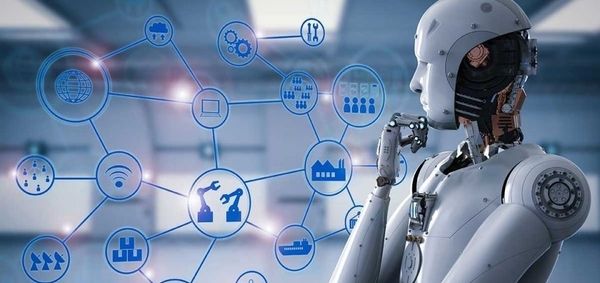
Can Solar Be Used to Power a Data Center?
April 2, 2019
13 Deadly Sins of Cloud Application Deployment
April 4, 2019Artificial intelligence is no longer just a buzzword but a massive reality now. It is continuing to transform the user experience for all kinds of digital interfaces including mobile apps, e-commerce stores, and enterprise websites. Artificial intelligence is conceived by many as the great replacement of human intelligence. Let us have no doubt that still human intelligence and power of reasoning are miles ahead of machines and software programs in terms of capacity and effectiveness. So, again, now artificial intelligence is just a value addition that is primarily controlled and maneuvered by humans.
The Power of AI in Catching up Human Intelligence
Before we discuss the humanizing effect on artificial intelligence (AI), it is important to know how AI can catch up with human intelligence. Just look at how IBM Watson is continuing to become more competitive with increasing level of sophistication and replacing the human involvement for various challenging tasks. IBM Watson is continuing to learn more unique and challenging human traits like adaptability, creativity and emotional intelligence that are less probable to be conceived by machines and software programs.
But in spite of this increased capacity of AI-powered systems, the role of human involvement and participation seems irreplaceable for the years to come. As of now, the best results from AI-powered systems always come when human and machines participate in a complementary and mutually inclusive manner.
All New Bots Capable to Interact with Humans
Earlier the bots were used to be relied upon only for answering some preconceived questions from the users. This first generation bots helped businesses provide answers to FAQ queries through a fluent interface. But such bots have already been obsolete, and we have got more interactive and intelligent bots that can answer to user queries based upon contexts, user profiles, and preferences. Now, bots can perform a lot of tasks to help users buy products and opt for preferred solutions. The interactive and intelligent chatbots emerged as the most useful and effective customer service tool for online businesses.

This big role of chatbots for performing customer service operation has got a further boost thanks to the modern messaging apps like the WhatsApp, Messenger, and WeChat that are now accommodating intelligent chatbots to interact with customers and provide timely answers to all types of queries. These messaging chatbots further helped customer service with context-aware and emotionally-charged responses.
This shift of traditional customer service to online platforms through messaging platforms forced businesses to adapt to these customer service bots for competitive gains. No wonder, customer service bots with interactive capability has been the most critical era-defining shift for the businesses having digital footprints.
How Can Chatbots in Customer Service Be More Effective?
When customer service chatbots continue to be popular across the business of all niches, it is essential to know how chatbots can play a more effective and efficient role for serving customers? Let’s have a look at where customer service bots can play an active role in place of human staff.
- To begin with, a bot can answer all routine customer service queries. How IVR in many customer services starts with some vital announcement is an example of how with simple automation can answer the most common and repetitive questions and save workforce efforts.
- A bot working alongside a customer service agent can also help to deliver a better answer to customer queries. When the agents are always vulnerable to make faults in answering questions of all types, intelligent bots alongside can help them solve the queries more precisely. This requires the employees to get training to know how they can work alongside bots for handling customer queries better.
- Intelligent chatbots also help companies processing the vast amount of customer queries and containing data to gain further insights. These data-driven insights can help companies know the potential shortcomings and opportunities in their business process.
Addressing the Limitations of AI
With so many promises and so overwhelming popularity of artificial intelligence, hardly we call to mind the possible loopholes and shortcomings of the technology. While most of the times it is natural to be overwhelmed by the superb output of AI for customer service, analytics and customer experience, the technology has its fair share of shortcomings as well.
The biggest shortcoming of the AI is that it always remains limited within the information it is fed. AI can never go beyond the available data and gain insights into unforeseen probabilities. That is precisely where human intelligence seems to play an inevitable role, and this is precisely why humanizing AI with human inputs seems necessary. Human intelligence advocating for different perspectives including the ones that are not grasped through the immediately available data, can give AI a more significant boost and reach.
What Does It Take to Humanize AI?

Based on these shortcomings of AI it is quite evident that some critical faculties of the human brain that always remain far powerful compared to the calculative potential of computers can be incorporated alongside machine intelligence to deliver more precision-driven customer service. While the machine intelligence will ensure precision, accuracy and calculation, human intelligence by bringing in cultural and social insights can help to address more complex questions of customer service.
This is why the future growth and practical role of AI will depend more on the hybrid approach of bringing together machine and human intelligence into a comprehensive interactive mechanism.
Conclusion
While there is no sign for the popularity of AI shortly, human intelligence working alongside the machines will continue to play a decisive role in the context of customer service. When it comes to serving each customer individually, AI can bring out the relevant data-driven insights, but human understanding will help the communication to be more customer-centric.

